
Author Archive

Tejal Desai, PhD
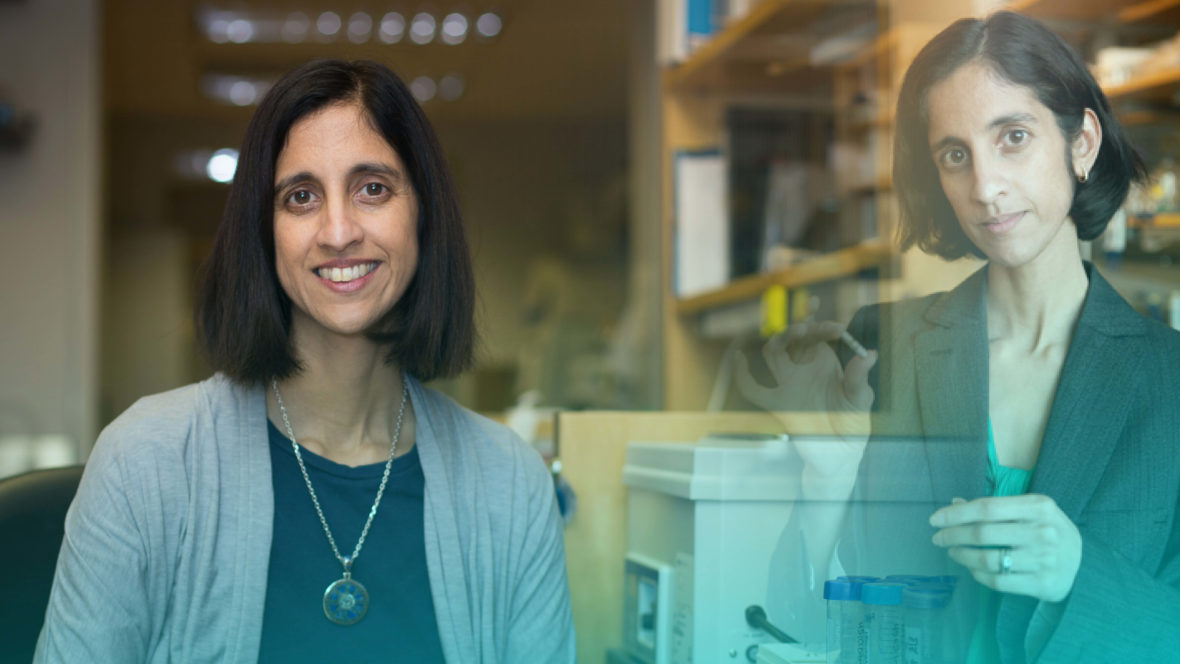 Tejal Desai is a Professor and Chair of the Department of Bioengineering and Therapeutic Sciences at University of California, San Francisco and head of the Therapeutic Micro and Nanotechnology Laboratory. Desai is an acknowledged world leader in therapeutic microscale and nanoscale technologies and is at the forefront of engineering the next generation of drugs, using the tools of semiconductor manufacturing from Silicon Valley to make miniscule medical devices that deliver a drug or multiple drugs directly to specific areas of concern. Results from her lab include the use of silicon nanowire coated silica beads as adhesive drug-delivery vehicles, especially to the human gut, the micro/nanoscale cage or biocapsule for controlled drug delivery, and nanostructured thin-film devices for controlled ocular drug delivery. An elected fellow of the American Institute of Medical and Biological Engineering (AIMBE) the Biomedical Engineering Society, and the National Academy of Medicine, Desai is also a recipient of the prestigious Paul Dawson Biotechnology Award from the American Association of Colleges of Pharmacy. She was selected as one of the “Brilliant 10” Top Scientists in the Nation by Popular Science, received the Visionary Science Award from the BioMEMS and Nanotechnology Society, and the Global Indus Technovator Award from MIT.
Tejal Desai is a Professor and Chair of the Department of Bioengineering and Therapeutic Sciences at University of California, San Francisco and head of the Therapeutic Micro and Nanotechnology Laboratory. Desai is an acknowledged world leader in therapeutic microscale and nanoscale technologies and is at the forefront of engineering the next generation of drugs, using the tools of semiconductor manufacturing from Silicon Valley to make miniscule medical devices that deliver a drug or multiple drugs directly to specific areas of concern. Results from her lab include the use of silicon nanowire coated silica beads as adhesive drug-delivery vehicles, especially to the human gut, the micro/nanoscale cage or biocapsule for controlled drug delivery, and nanostructured thin-film devices for controlled ocular drug delivery. An elected fellow of the American Institute of Medical and Biological Engineering (AIMBE) the Biomedical Engineering Society, and the National Academy of Medicine, Desai is also a recipient of the prestigious Paul Dawson Biotechnology Award from the American Association of Colleges of Pharmacy. She was selected as one of the “Brilliant 10” Top Scientists in the Nation by Popular Science, received the Visionary Science Award from the BioMEMS and Nanotechnology Society, and the Global Indus Technovator Award from MIT.
Why we’re editing women scientists onto Wikipedia
Nature
Marie Curie is one of the most famous women in science. But her first page on Wikipedia was shared with her husband — until someone pointed out that, perhaps, her scientific contributions were notable enough to warrant her own biography.
That’s the beauty of Wikipedia. It is the fifth most popular website in the world and notches up more than 32 million views a day. A community of volunteer editors collaboratively edit, update and add content to democratize access to a common and constantly updating collection of knowledge. But as with any democracy, results are determined by those who choose to participate. Who edits Wikipedia — and the biases they carry with them — matters.
Closing diversity gaps in patenting is essential to innovation economy
The Hill
In 1871, Margaret Knight earned a patent for inventing a brown paper bag with a flat bottom, the same model that is used in most grocery stores across the country today. More than a century later, African American inventor Lonnie Johnson received a patent for his Super Soaker water gun, a toy that has generated more than $1 billion in sales and has been among the top 20 best selling toys in the world every year since 1991.
The commercial success these inventors enjoyed was based on a strong and open patent system. Except for individuals held in slavery, the U.S. patent system has always welcomed all inventors by awarding patents regardless of race, gender, or economic status. It is an essential engine of innovation. Economic activity from patents in the United States is estimated at more than $8 trillion and intellectual property industries directly and indirectly support 30 percent of all U.S. employment.

Paula Hammond, PhD
Paula Hammond, PhD
 Dr. Hammond is the David H. Koch Professor in Engineering and head of the Department of Chemical Engineering at MIT. She is a widely recognized and cited researcher in biomaterials and drug delivery. Her research focuses on using nanoscale biomaterials to attack cancer. Prof. Hammond continues to serve as an Associate Editor of the American Chemical Society journal, ACS Nano. As a part of the Year of Chemistry in 2011, she was one of the Top 100 materials scientists named by Thomson-Reuters, a recognition of the highest citation impact in the field over the past decade (2001-2011). She has published over 200 papers and holds over 20 patents based on her research at MIT. She is an elected member of the National Academy of Engineering, the American Academy of Arts and Sciences, National Academy of Medicine, and the American Institute for Medical and Biological Engineering.
Dr. Hammond is the David H. Koch Professor in Engineering and head of the Department of Chemical Engineering at MIT. She is a widely recognized and cited researcher in biomaterials and drug delivery. Her research focuses on using nanoscale biomaterials to attack cancer. Prof. Hammond continues to serve as an Associate Editor of the American Chemical Society journal, ACS Nano. As a part of the Year of Chemistry in 2011, she was one of the Top 100 materials scientists named by Thomson-Reuters, a recognition of the highest citation impact in the field over the past decade (2001-2011). She has published over 200 papers and holds over 20 patents based on her research at MIT. She is an elected member of the National Academy of Engineering, the American Academy of Arts and Sciences, National Academy of Medicine, and the American Institute for Medical and Biological Engineering.

Rebecca Richards-Kortum, PhD
Rebecca Richards-Kortum, PhD
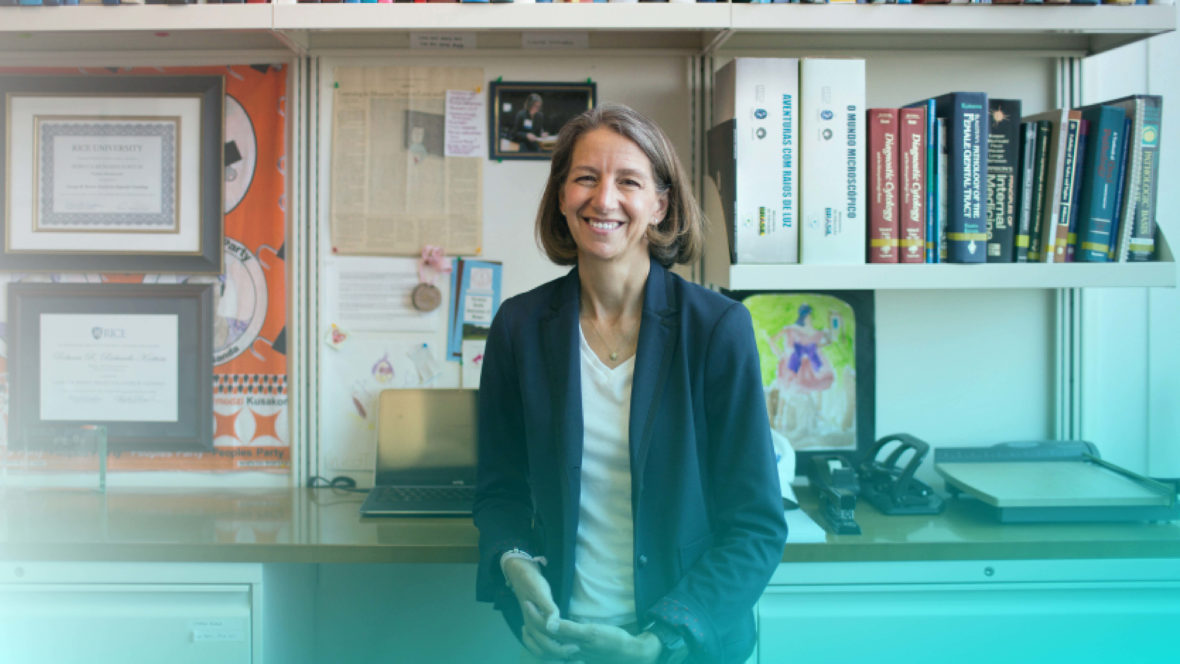 Rebecca Richards-Kortum is the Malcolm Gillis University Professor of Biomedical Engineering at Rice University. Guided by the belief that all of the world’s people deserve access to health innovation, Richards-Kortum’s research and teaching focus is on the development of low-cost, high-performance technologies for remote and low-resource settings. She is known for providing vulnerable populations with access to life-saving health technologies that address diseases and conditions that cause high morbidity and mortality, such as cervical and oral cancer, premature birth, sickle cell disease and malaria. Richards-Kortum’s research and engineering design efforts have led to the development of 40 patents. She is author of the textbook Biomedical Engineering for Global Health published by Cambridge University Press (2010), more than 315 refereed research papers and 13 book chapters. In July 2017, the MacArthur Foundation named an international team of collaborators led by Richards-Kortum a finalist for its 100&Change $100 million grant competition for its plan to end preventable newborn deaths in Africa within 10 years. As part of this plan, Richards-Kortum and her team are developing and implementing Newborn Essential Solutions and Technologies, or NEST 360°, which is an integrated group of 17 lifesaving neonatal technologies that could prevent half of the newborn deaths in Africa.
Rebecca Richards-Kortum is the Malcolm Gillis University Professor of Biomedical Engineering at Rice University. Guided by the belief that all of the world’s people deserve access to health innovation, Richards-Kortum’s research and teaching focus is on the development of low-cost, high-performance technologies for remote and low-resource settings. She is known for providing vulnerable populations with access to life-saving health technologies that address diseases and conditions that cause high morbidity and mortality, such as cervical and oral cancer, premature birth, sickle cell disease and malaria. Richards-Kortum’s research and engineering design efforts have led to the development of 40 patents. She is author of the textbook Biomedical Engineering for Global Health published by Cambridge University Press (2010), more than 315 refereed research papers and 13 book chapters. In July 2017, the MacArthur Foundation named an international team of collaborators led by Richards-Kortum a finalist for its 100&Change $100 million grant competition for its plan to end preventable newborn deaths in Africa within 10 years. As part of this plan, Richards-Kortum and her team are developing and implementing Newborn Essential Solutions and Technologies, or NEST 360°, which is an integrated group of 17 lifesaving neonatal technologies that could prevent half of the newborn deaths in Africa.
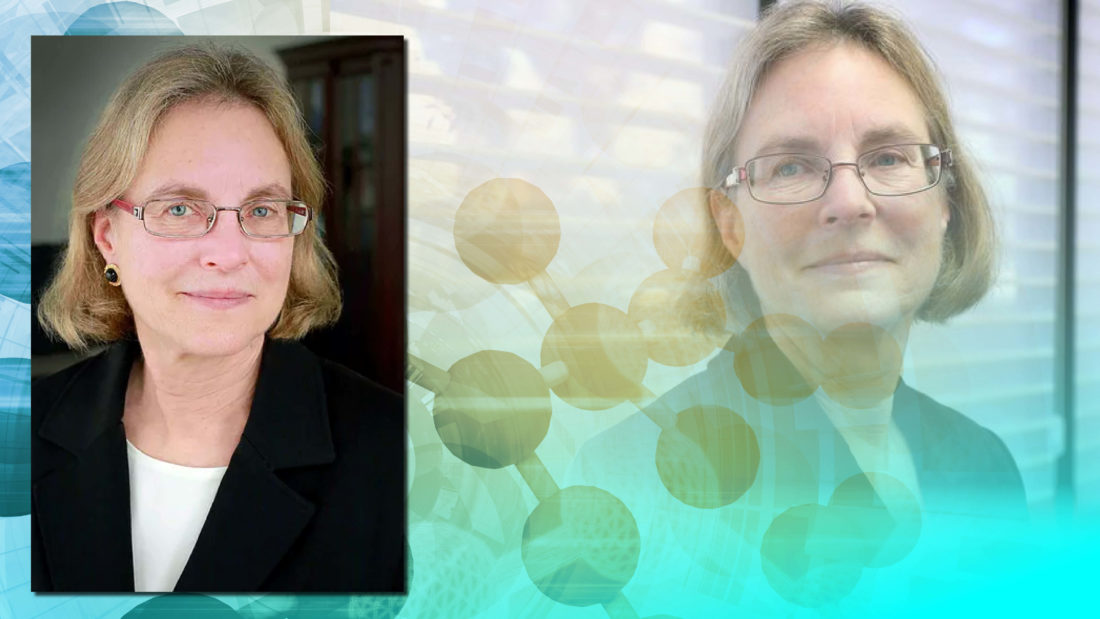
Ann Salamone
Ann Salamone
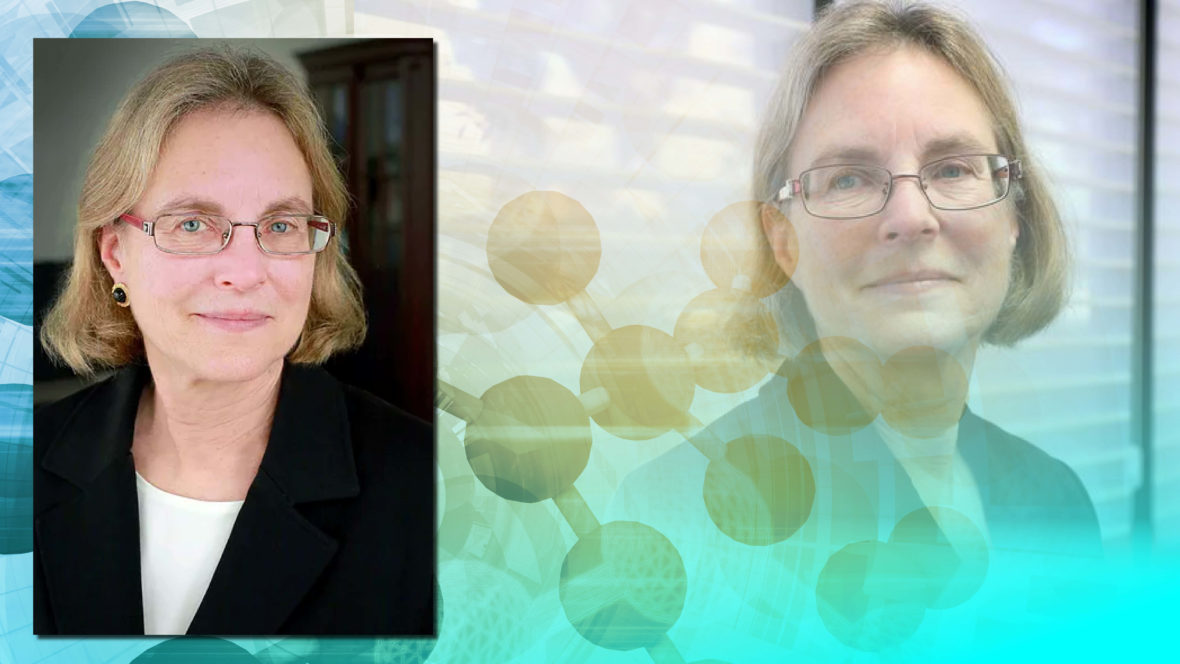 Ann Beal Salamone is President of Rochal Industries, which is a global leader in commercializing technology innovations in polymer, antimicrobial and biological systems. She has developed products for electronics, water purification, personal care and healthcare and has invested in, and served on, the boards for several entrepreneurial companies as well as co-founded six companies. During her tenure as Vice President of EDC (a South Florida science & technology incubator), EDC’s clients increased aggregate revenues by more than $98 million, raised more than $74 million in outside funding, and created 5,013 jobs. She was elected Chairman of the American Chemical Society’s Polymer Division (8,000 members) and is a co-founder of the Intersociety Polymer Education Council which has provided hands-on in-services to over 500,000 K-12 science teachers since 1991. She is an Inaugural Fellow of ACS and a Fellow of AIMBE, the recipient of the 2002 Crystal Slipper Award “Executive Woman of the Year” and a recipient of the 2011 Healthcare Businesswomen’s Association LEAD Award. Salamone serves as Vice Chair of the BioMed SA Board of Directors, a member of the UTSA Biomedical Engineering Advisory Board, and a member of three UT Health-San Antonio Advisory Boards related to translational clinical science and community health. Salamone was elected to the National Academy of Engineering in 2016 “for development of materials for biomedical applications, personal care, electronics, and water purification.”
Ann Beal Salamone is President of Rochal Industries, which is a global leader in commercializing technology innovations in polymer, antimicrobial and biological systems. She has developed products for electronics, water purification, personal care and healthcare and has invested in, and served on, the boards for several entrepreneurial companies as well as co-founded six companies. During her tenure as Vice President of EDC (a South Florida science & technology incubator), EDC’s clients increased aggregate revenues by more than $98 million, raised more than $74 million in outside funding, and created 5,013 jobs. She was elected Chairman of the American Chemical Society’s Polymer Division (8,000 members) and is a co-founder of the Intersociety Polymer Education Council which has provided hands-on in-services to over 500,000 K-12 science teachers since 1991. She is an Inaugural Fellow of ACS and a Fellow of AIMBE, the recipient of the 2002 Crystal Slipper Award “Executive Woman of the Year” and a recipient of the 2011 Healthcare Businesswomen’s Association LEAD Award. Salamone serves as Vice Chair of the BioMed SA Board of Directors, a member of the UTSA Biomedical Engineering Advisory Board, and a member of three UT Health-San Antonio Advisory Boards related to translational clinical science and community health. Salamone was elected to the National Academy of Engineering in 2016 “for development of materials for biomedical applications, personal care, electronics, and water purification.”

Molly Shoichet, PhD
Molly Shoichet, PhD
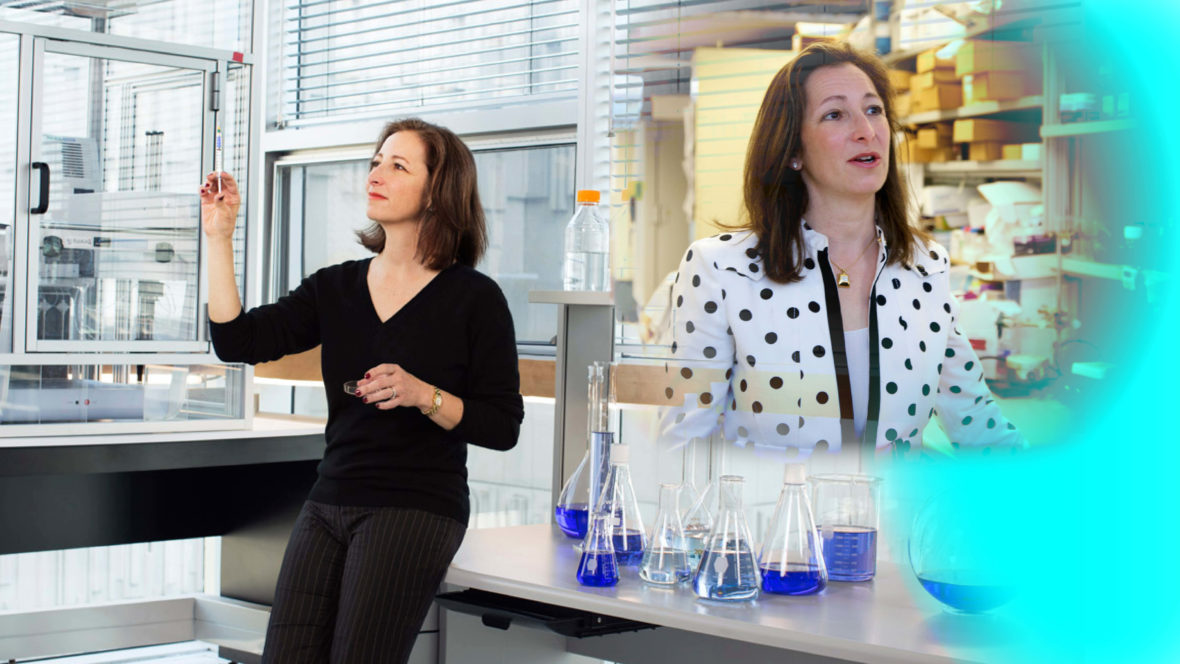 Dr. Molly Shoichet holds the Tier 1 Canada Research Chair in Tissue Engineering and is University Professor of Chemical Engineering & Applied Chemistry, Chemistry and Biomaterials & Biomedical Engineering at the University of Toronto. She is an expert in the study of Polymers for Drug Delivery & Regeneration which are materials that promote healing in the body. Dr. Shoichet has published over to 575 papers, patents and abstracts and has given over 350 lectures worldwide. She currently leads a laboratory of 32 researchers and has graduated 157 researchers over the past 22 years. Dr. Shoichet co-founded three spin-off companies, is actively engaged in translational research and science outreach. Dr. Shoichet is the recipient of many prestigious distinctions and the only person to be a Fellow of Canada’s 3 National Academies: Canadian Academy of Sciences of the Royal Society of Canada, Canadian Academy of Engineering, and Canadian Academy of Health Sciences. Dr. Shoichet won the L’Oréal-UNESCO For Women in Science Award for North America in 2015. Dr. Shoichet holds the Order of Canada, Canada’s highest civilian honor and the Order of Ontario, Ontario’s highest honor. She is a Fellow of the American Association for the Advancement of Science. In 2013, her contributions to Canada’s innovation agenda and the advancement of knowledge were recognized with the QEII Diamond Jubilee Award. In 2014, she was given the University of Toronto’s highest distinction, University Professor, a distinction held by less than 2% of the faculty. She is an elected member of the National Academy of Engineering, the American Institute for Medical and Biological Engineering and winner of the Killam Prize in Engineering in 2017. In 2018, Dr. Shoichet was named Chief Scientist for the province of Ontario.
Dr. Molly Shoichet holds the Tier 1 Canada Research Chair in Tissue Engineering and is University Professor of Chemical Engineering & Applied Chemistry, Chemistry and Biomaterials & Biomedical Engineering at the University of Toronto. She is an expert in the study of Polymers for Drug Delivery & Regeneration which are materials that promote healing in the body. Dr. Shoichet has published over to 575 papers, patents and abstracts and has given over 350 lectures worldwide. She currently leads a laboratory of 32 researchers and has graduated 157 researchers over the past 22 years. Dr. Shoichet co-founded three spin-off companies, is actively engaged in translational research and science outreach. Dr. Shoichet is the recipient of many prestigious distinctions and the only person to be a Fellow of Canada’s 3 National Academies: Canadian Academy of Sciences of the Royal Society of Canada, Canadian Academy of Engineering, and Canadian Academy of Health Sciences. Dr. Shoichet won the L’Oréal-UNESCO For Women in Science Award for North America in 2015. Dr. Shoichet holds the Order of Canada, Canada’s highest civilian honor and the Order of Ontario, Ontario’s highest honor. She is a Fellow of the American Association for the Advancement of Science. In 2013, her contributions to Canada’s innovation agenda and the advancement of knowledge were recognized with the QEII Diamond Jubilee Award. In 2014, she was given the University of Toronto’s highest distinction, University Professor, a distinction held by less than 2% of the faculty. She is an elected member of the National Academy of Engineering, the American Institute for Medical and Biological Engineering and winner of the Killam Prize in Engineering in 2017. In 2018, Dr. Shoichet was named Chief Scientist for the province of Ontario.
Gilda Barabino earns second national award this summer
Gilda Barabino | Aug. 1, 2018
The National Organization for the Professional Advancement of Black Chemists and Chemical Engineers presents its 2018 Dr. Joseph N. Cannon Award for Excellence in Chemical Engineering to Gilda A. Barabino, dean of The City College of New York’s Grove School of Engineering this fall. The award recognizes her excellent achievements in chemical engineering…
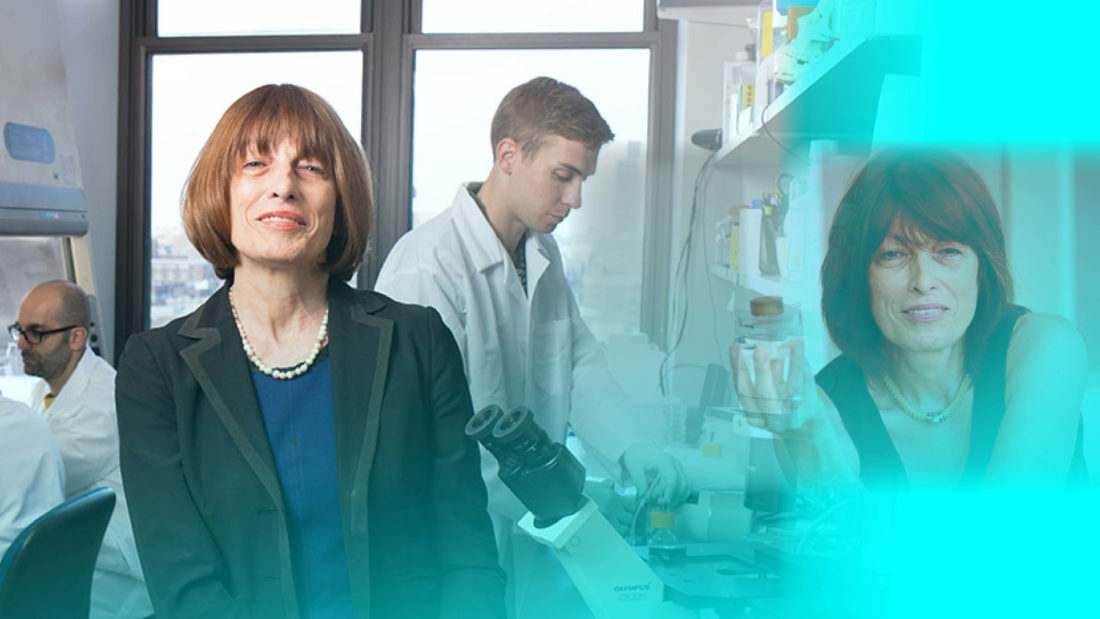
Gordana Vunjak-Novakovic, PhD
Gordana Vunjak-Novakovic, PhD
 Gordana Vunjak-Novakovic holds the title of University Professor, Columbia University’s highest rank reserved for a small number of faculty who have made important contributions to their field of study and serve the university as a whole. She is a leading expert in engineering of functional human tissues for regenerative medicine and modeling of disease. She trained over 150 graduate students and postdocs, many of which now hold the academic and executive positions. With over 41,000 citations and h=115, she is one of the most highly cited individuals of all times, in all disciplines. An entrepreneur, she founded four biotech companies. Vunjak-Novakovic has given 400 invited lectures, published 380 referred journal articles and 70 book chapters, and is a co-inventor on 90 licensed, issued and pending patents. She is a frequent advisor on to the federal government and industry. Among her many distinctions, she is a member of the Academia Europaea, National Academy of Engineering, National Academy of Medicine, National Academy of Inventors, and the American Institute for Medical and Biological Engineering.
Gordana Vunjak-Novakovic holds the title of University Professor, Columbia University’s highest rank reserved for a small number of faculty who have made important contributions to their field of study and serve the university as a whole. She is a leading expert in engineering of functional human tissues for regenerative medicine and modeling of disease. She trained over 150 graduate students and postdocs, many of which now hold the academic and executive positions. With over 41,000 citations and h=115, she is one of the most highly cited individuals of all times, in all disciplines. An entrepreneur, she founded four biotech companies. Vunjak-Novakovic has given 400 invited lectures, published 380 referred journal articles and 70 book chapters, and is a co-inventor on 90 licensed, issued and pending patents. She is a frequent advisor on to the federal government and industry. Among her many distinctions, she is a member of the Academia Europaea, National Academy of Engineering, National Academy of Medicine, National Academy of Inventors, and the American Institute for Medical and Biological Engineering.
Student-Built Online Game Accompanies Online Class
Angelique Louie | Jul. 31, 2018
When Professor Angelique Louie needed some help with her online course “Introduction to Research,” she enlisted a little help from experts such as science fiction author H.G. Wells, biochemist Rosalind Franklin and poet Alexander Pushkin…
New analysis of funding trends offers encouraging news for female investigators—with caveats
Science
Once female scientists receive a major research project grant from the National Institutes of Health (NIH), their funding futures are quite similar to those of their male peers, a new study reports. That suggests gender represents a small, and shrinking, barrier to success in a biomedical science career, the authors argue, and it emphasizes the importance of encouraging women to apply for grants in the first place. Yet these statistics belie the significant systemic hurdles that persist for many women, others say.
The study helps illustrate where work remains to be done to truly make opportunities in science equal for men and women, says Donna Ginther, a professor of economics at the University of Kansas in Lawrence who studies the scientific workforce, and who wasn’t involved with the study. “The more evidence we have about where [bias] is happening and where it’s not happening in the pipeline, the better we’ll be able to address those problems.”
Bias, Diversity, Backlash, Manifestos, and Rebuttals
Code Like A Girl
Have you ever been in a meeting where a colleague says “I’m a great supporter of gender equality, but I’m totally opposed to quotas!” Or, “I believe in diversity, but I won’t stand for positive discrimination.” Maybe you felt a bit troubled by such statements, thinking: that sounds fair, but somehow I don’t think it is… how do I rebut this?
Bias is omnipresent in our society, and some of us are keenly aware of rampant bias in sectors like technology, engineering and politics. Efforts to thwart the effects of bias in communities and institutions prompt a spectrum of diversity initiatives. Many times these lead to backlash. It’s been just a year since the memo “Google’s Ideological Echo Chamber” spread through the company’s internal channels, then became public. Yet, another wrangle is already blasting online with the article “Why Women Don’t Code,” by a university lecturer. What do we do when privileged individuals continue to turn a blind eye on the injustices around them? They insist on points like “women are less likely to choose computer science,” and that it’s just due to natural differences.
What you should know about race-based affirmative action and diversity in schools
The Washington Post
It’s no surprise that the Trump administration is pressing its efforts to quash affirmative action in admissions, rescinding Obama-era policy aimed at promoting diversity in education and instead bolstering race-blind admissions in schools at all levels.
After all, Attorney General Jeff Sessions last year took aim at affirmative action, announcing that the Department of Justice would investigate and sue institutions of higher education that it determined had discriminated against white applicants in admissions decisions. And President Trump seems obsessed with undoing just about every single thing Barack Obama did when he was president.
Group uses AI to assess mammo interpretation bias
Georgia Tourassi | Jun. 29, 2018
Researchers from Oak Ridge National Laboratory (ORNL) in Oak Ridge, TN, have used artificial intelligence (AI) technology to analyze how radiologists read mammograms, according to research published in the July issue of the Journal of Medical Imaging….
Male scientists are far more likely to be referred to by their last names, impacting status and awards
Science
Darwin, Newton, Einstein. When scientists reach a certain level of fame, first names need not apply. That’s especially true if the scientist is a man, according to a new study. And it doesn’t just go for scientists: Politicians, athletes, and other high-profile figures are more likely to be referred to by their last names alone if they’re a man.
Study Finds Recommendation Letters Inadvertently Signals Doubt About Female Job Applicants
Inside Higher Ed
Some scholars have questioned academe’s reliance on letters of recommendation, saying they’re onerous for the professors writing them or speak more about connections to “big-name” scholars than substance, or both.
A recent study explores another concern about letters of recommendation: whether they’re biased against the women they’re supposed to help. The short answer is yes.
The longer answer — and the study’s obvious takeaway for recommendation-letter writers and readers — is that letters about women include more doubt-raising phrases than those about men, and that even one such phrase can make a difference in a job search.
My career seemed to hit a wall. Now I see that it was discrimination
Science
I landed my dream job: a tenure-track position at a primarily undergraduate institution near my hometown where I would develop a new neuroscience major. I entered that position the way one enters a marriage: expecting it to last forever, assuming I would give it everything I had, hoping that—while it would not always be easy—it would be worth it. Soon, though, something seemed amiss. It felt kind of like sexism—but not exactly. Whatever it was, I experienced it from both women and men, from the department chair to the administrative assistant. It was only after many years and a career upheaval that I learned there was a legal term to describe it.
Regenerative Bandage Accelerates Healing in Diabetic Wounds
Guillermo Ameer | Jun. 11, 2018
June 11, 2018
Glioblastoma multiforme, a type of brain tumor, is one of the most difficult-to-treat cancers. Only a handful of drugs are approved to treat glioblastoma, and the median life expectancy for patients diagnosed with the disease is less than 15 months…
Women of Color in Academe Make 67 Cents for Every Dollar Paid to White Men
The Chronicle of Higher Education
Women of color earn only 67 cents on the dollar compared with white men in the higher-education work force, according to a recently released research brief from the College and University Professional Association for Human Resources, or CUPA-HR.
Specifically, the brief found that women of color are underrepresented in academe, compared with their representation in the U.S. population at large — especially in more lucrative faculty, professional, and administrative roles, versus lower-paying staff positions. And in three out of four job types (professional, staff, and faculty) women of color are paid less than white men, men of color, and white women.
Rebecca Richards-Kortum named US science envoy
Rebecca Richards-Kortum | Jun. 8, 2018
June 8, 2018
The State Department has selected Rice University bioengineer and global health pioneer Rebecca Richards-Kortum to serve as a U.S. science envoy. She is one of five science envoys announced today and one of only 23 scientists ever selected for this prestigious position…
Cynthia Reinhart-King to serve on National Academies inaugural New Voices panel
Cynthia Reinhart-King | Jun. 8, 2018
Cynthia Reinhart-King, Cornelius Vanderbilt Professor of Engineering and professor of biomedical engineering, is one of 18 early-career leaders selected by the National Academies of Science, Engineering, and Medicine to serve on New Voices in Sciences, Engineering, and Medicine, a pilot initiative to engage a diverse network of emerging leaders in SEM fields across the United States…
What does it take to make an institution more diverse?
Nature
Many research institutions have made efforts to increase diversity among their administrations, faculty and staff members and student bodies. But research shows there is work to be done — and that the pay-off is immense. A 2017 study of 40 US public universities, for example, found that black, Hispanic and female science-faculty members continue to be under-represented relative to the US population (D. Li and C. Koedel Educ. Res. 46, 343–354; 2017).
Besides honing their strategies to draw more women and people of ethnic-minority groups, some organizations are also expanding opportunities for people from economically disadvantaged areas and those with physical disabilities, as well as trying to better represent people of all sexual orientations and gender identities.
Nature spoke to six people on the front lines of diversity efforts for insights into what works.
Hiring a Diversity Officer Is Only the First Step. Here Are the Next 7.
The Chronicle of Higher Education
In today’s season of #MeToo, Dreamers, Black Lives Matter movements, and radical-right backlash, colleges are adding chief diversity officers to the list of essential employees. However, hiring a skilled diversity professional is just the first step. To be most effective, chancellors, presidents, and provosts must join with diversity officers to build campus environments where equity, inclusion, and diversity become a part of everyday campus life. Otherwise, they are only setting up their chief diversity officers — and their institutions — for failure.
I hope the following strategies will help college leaders better position their diversity officers for success:
Go first. It’s unreasonable to hold others accountable for diversity when your own staffers look just like you. So if you want more diversity on your campus, start by diversifying your own staff at the highest levels and treating its members with respect. If you do that, others are more likely to follow, and your campus will be better for it.
Engineers design color-changing compression bandage
Jennifer Lewis | May 29, 2018
Compression therapy is a standard form of treatment for patients who suffer from venous ulcers and other conditions in which veins struggle to return blood from the lower extremities. Compression stockings and bandages, wrapped tightly around the affected limb, can help to stimulate blood flow. But there is currently no clear way to gauge whether a bandage is applying an optimal pressure for a given condition…
Tiny particles could help fight brain cancer
Paula Hammond | May 24, 2018
Glioblastoma multiforme, a type of brain tumor, is one of the most difficult-to-treat cancers. Only a handful of drugs are approved to treat glioblastoma, and the median life expectancy for patients diagnosed with the disease is less than 15 months…
Want to Debias Hiring? Change What Hiring Managers Focus On
Behavioral Scientist
Take a look at the two orange dots below. Which one is bigger? If you’re like most people, you can’t help but see the orange dot on the right as larger. However, when the blue dots disappear, removing the “context,” it’s clear that the orange dots are the same size. This is known as the Ebbinghaus illusion, and it illustrates a fundamental principle of our psychology: context matters. This is true for judgments of all kinds, ranging from how we see the world to how we make choices in our everyday lives.
Imagine that it’s the late afternoon and you’re craving a snack. You reach into your stash of snacks and pull out two options: a granola bar and a chocolate bar. How do you decide which snack to have? The granola is healthier than the chocolate, but the chocolate is tastier. Now imagine that instead of just these two snacks, you have a third: a gross but extremely healthy protein bar. Rationally, the protein bar shouldn’t affect how you feel about the two original options, and yet it makes the granola bar more attractive, because the granola bar now seems like a compromise on both health and taste. This well-documented shifting-of-preference phenomenon is known as the decoy effect.
Medical device group recognizes Martine LaBerge of Clemson University with award
Martine LaBerge | May 16, 2018
Martine LaBerge, chair of the Department of Bioengineering, received the SEMDA Spotlight Award recognizing her contributions to the development of the Southeastern medical device community. The award came from the Southeastern Medical Device Association, a non-profit trade association that aims to make the Southeast a world-class region for medical technology, device and diagnostic companies…
Go beyond bias training
Nature
One morning in February 1934, the police showed up at J. Robert Oppenheimer’s home in Berkeley, California, to ask why he had left his date in a car by herself all night. Oppenheimer explained that he had gone for a stroll, got lost in his thoughts and walked home, forgetting his car and companion.
Newspapers reporting this story for Valentine’s Day revelled in tales of the absent-minded professor, an archetype that most of us recognize. Brilliant, but short on social graces, such thinkers are assumed to be too busy pondering the deepest questions of the Universe to be bothered with the quotidian.
Why it’s hard to prove gender discrimination in science
Nature
The Salk Institute for Biological Studies in La Jolla, California, asked a judge on 11 May to dismiss portions of three gender-discrimination lawsuits filed by senior female scientists there in July 2017. To prove their cases, the plaintiffs are seeking to compel the Salk — a private research institution — to disclose information about how funds and laboratory space are allocated, as well as about complaints concerning sexual harassment and the unfair treatment of women.
Rethinking the Narrative of Diversity in Science
Scientific American
Esteban Burchard is Latino. He grew up in poverty, raised by a single mother, and has faced discrimination all of his life. He is now a world-renowned researcher and tenured professor at the University of California, San Francisco (UCSF). His “underdog story” reads like so many others told about scientists from underrepresented backgrounds. However, these narratives have become stale, overused and devoid of important context and depth.
How a Common Interview Question Fuels the Gender Pay Gap (and How to Stop It)
The New York Times
Aileen Rizo was training math teachers in the public schools in Fresno, Calif., when she discovered that her male colleagues with comparable jobs were being paid significantly more.
She was told there was a justifiable reason: Employees’ pay was based on their salaries at previous jobs, and she had been paid less than they had earlier in their careers.
6 Things Successful Women in STEM Have in Common
Harvard Business Review
For years, companies, universities and nonprofits have researched the reasons why women are less likely to enter STEM fields — and why, once they enter, they face challenges that frequently push them out. In prior research, we at the Center for Talent Innovation (CTI) found that women leave STEM fields in droves: 52% of highly qualified women working for science, technology, or engineering companies leave their jobs. We, and others, have found that the cultures surrounding women in STEM have been shown, time and again, to be particularly challenging.
The Value of Collaborations for Diversity and Inclusion in Biomedicine
National Institutes of Health
“Coming together is a beginning, staying together is progress, and working together is success.” – Henry Ford
As has been articulated by many, team performance transcends individual strength. Certainly, this is the case for biomedical research, especially in the modern era. Team science draws together novel ideas and approaches, undergirding the value of workforce diversity for solving complex health challenges. Collaborations—across sectors and organizations—extend the concept even further. Such alliances are essential for achieving lasting health and economic impact from biomedical research, and for sustaining scientific workforce diversity, the engine that drives innovation from discovery to application.
Researchers to examine what attracts, discourages Black students in engineering education
Clemson University
A team of Clemson researchers is using a $398,263 award from the National Science Foundation’s Broadening Participation in Engineering program to examine factors that both encourage and discourage Black students from pursuing education in engineering fields. Researchers will also examine how different academic pathways in engineering vary by gender and institution type for Black students.
1+ 1 = 3 (or More): The Value of Collaborations for Diversity and Inclusion in Biomedicine
NIH Scientific Workforce Diversity Blog
“Coming together is a beginning, staying together is progress, and working together is success.” – Henry Ford
As has been articulated by many, team performance transcends individual strength. Certainly, this is the case for biomedical research, especially in the modern era. Team science draws together novel ideas and approaches, undergirding the value of workforce diversity for solving complex health challenges. Collaborations—across sectors and organizations—extend the concept even further. Such alliances are essential for achieving lasting health and economic impact from biomedical research, and for sustaining scientific workforce diversity, the engine that drives innovation from discovery to application.
CEO’s with Diverse Networks Create Higher Firm Value
Harvard Business Review
Leaders today hear a lot about the importance of having good networks. For example, firms with better-connected CEOs can obtain cheaper financing, and firms with well-connected board directors see better performance. We wanted to explore whether the diversity of CEOs’ networks might affect their firms.
Our study, published in the Journal of Corporate Finance, found that CEOs with strong connections to people of different demographic backgrounds and skill sets create higher firm value. We also found that this greater firm value comes from better corporate innovations and successful diversified M&As. Our work suggests that the diversity of leaders’ social networks is a key ingredient in how they grow their companies.
For women in science, busting barriers is just part of the job
The Christian Science Monitor
Once, when Alison Coil was on a grant review panel, an unusual situation arose: Applications had come in from two people at similar points in their career on similar topics. One was from a white male, the other from a woman of color.
Dr. Coil, an astrophysicist at the University of California in San Diego, remembers the reaction as being mixed. While the women on the panel generally liked the female applicant’s proposal, one white man called it “too ambitious.” The woman didn’t get the funding.
New NSF rules on sexual harassment leave many questions unanswered
Science
The National Science Foundation (NSF) in Alexandria, Virginia, hopes that its new policy on sexual harassment will spur universities to deal more aggressively with the pervasive problem. But the additional reporting requirements, which will be officially published Monday in the Federal Register, are far from a definitive statement about how NSF plans to deal with this complex and sensitive subject.
The carefully worded notice, for example, doesn’t address whether a scientist found guilty of sexual harassment should automatically be removed from a grant. And it would not require universities to tell NSF when they launch investigations into allegations of harassment.
Why aren’t there more women in science and technology?
The Wall Street Journal
March 1, 2018
A key tenet of modern feminism is that women will have achieved equity only when they fill at least 50% of the positions once filled by men. In some fields, women have already surpassed that target—now comprising, for example, 50.7% of new American medical students, up from just 9% in 1965, and 80% of veterinary students. But the needle has hardly moved in many STEM fields—such as the physical sciences, technology, engineering and math, in which barely 20% of the students are female.
Gender Matters
Physics Today
Evidence shows that patterns of inequity in physics drive talented women out of the field. Here’s what physicists can do to overcome them. (perspective by Jennifer Blue, et al.)
In a seminar for teaching assistants, one male and one female TA stand up; the professor in charge tells the room that the male TA will get more respect from students. A woman talks to her undergraduate adviser about her desire for a PhD in physics; he replies, “You know physics is hard. Are you sure you want to try to do that?” A physics major asks a senior male professor for advice on getting into a good doctoral program; he suggests that she flirt more at conferences. In his letters of recommendation for students applying to graduate school, a professor consistently describes his male students as “brilliant” and “outstanding” while praising the women for being “conscientious” and “hardworking”; his male students are accepted to more competitive doctoral programs.
Investors Chasing Stable Returns Should Buy Firms Run by Women
Bloomberg
When it comes to gender diversity, it’s hard to compete with the Nordics.
The region is home to the world’s three most gender-equal nations: Iceland, Norway and Finland, according to the World Economic Forum. (Sweden places 5th out of 144 while the U.S. ranks 49th.) So Nordic findings in how gender equality affects areas such as corporate life and investing may offer a glimpse of things to come for other corners of the globe.
With that in mind, the region’s biggest bank, Nordea, says a key contribution that women make to the companies they run is stable returns.
The continuing challenges for women in STEMM
Cosmos
Senior levels of science are male dominated, but work is underway to restore the balance. Fiona McMillan reports.
International Women’s Day, on March 8, is a global celebration of the social, economic, cultural and political achievements of women. It’s also an annual call to action on gender parity.
In light of this, what does the future look like for women in science, technology, engineering, mathematics and medicine, or STEMM for short?
After all, quite a lot is riding on the answer. Our ability to address a wide range of current and future challenges — in climate, resource sustainability, food security, and health to name a few — will require advances in STEMM fields, as well as the insight and strategies to effectively use that new knowledge.
Sexual harassment pervades science. This scientist is talking to Congress about how to change that (interview with Kathryn Clancy)
Stat News
Kathryn Clancy has spent years studying the many ways sexual harassment pervades science, from university research labs to field biology sites. This week, she’s taking those findings to Congress.
The University of Illinois anthropology professor has found that harassment against women — and in particular, women of color — runs rampant in the space sciences. She’s surveyed researchers about the pervasiveness of sexual harassment and assault during scientific field work. She’s called out universities — which she says haven’t done enough to create change in research labs — to her thousands of Twitter followers.
Gender Analysis Of Invention Disclosures And Companies Founded By Stanford University Faculty From 2000-2014
SSRN
Abstract
This study examined gender differences in entrepreneurship by faculty at a major U.S. research university using data from the Stanford Office of Technology Licensing from 2000-2014 and relevant public data. Differences in participation by men and women faculty in reporting inventions were observed based on the total number of invention disclosures and the number of faculty who disclosed during the study period. As demonstrated through invention disclosures, women faculty increasingly engaged in offering their discoveries for possible commercial development to benefit the public. However, they remain much less likely than their men counterparts to be involved with start-up companies and in leadership roles among companies licensing university-generated intellectual property. Universities can track these activities through their licensing offices to devise strategies that encourage and facilitate the engagement of women faculty with technology transfer and formation of new companies.
Keywords: gender analysis, invention disclosures, companies founded by stanford University, stanford university, technology licensing, 2000-2014

